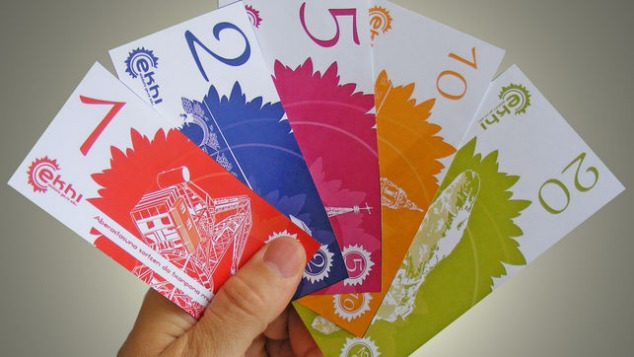1. Community and complementary currencies
Although often used interchangeably, “community currency” and “complementary currency” strictly refer to subtly different phenomena.
Complementary currencies are designed to sit alongside mainstream money to address objectives that the conventional money system can’t.
Community currencies are a subset of complementary currencies that are tied to a specific, demarcated, and limited community. This community could be, for example, geographical (local currencies); business- based (mutual credit systems); or even online (digital currencies). As such, a community currency is designed to meet the needs of this defined community, typically on a not-for-profit basis.

2. Time-based currencies
The community currencies most widely used to recognise the value of activities neglected by the mainstream economy are time banks. The principle behind such currencies is simple: one hour’s work equals a unit of time. Exchanges between members are mediated by a broker, who matches the requests of one member with the skills offered by others. This offers an incentive for people to help other members of their community and can give isolated or economically excluded individuals –such as the elderly –the opportunity to ‘buy’ services they would otherwise be unable to afford and to feel that their own skills are valued and needed by others.
A second model useful for increasing social inclusion, which is a derivative of traditional time banking, is that of time-based currencies often referred to as time-credit systems. Although working on the same principle of one hour one credit, this model overcomes certain limitations of time banks: most significantly, exchanges are not limited to being between individuals or by the mediation of a central broker. Instead, the currency itself –whether physical or electronic – mediates exchanges, circulating freely between any individual or organisation willing to issue or accept it.
3. LETS (Local Exchange Trading Systems)
LETS today are essentially mutual-credit systems for individuals, rather than businesses. Members of a LETS advertise their skills and services and exchange these with other members in return for credits. LETS are intended to mobilise the latent capacity of a community by providing both a forum and medium of exchange outside the conventional market economy. The networks are co-operatively managed and self- regulating and are commonly associated with the ideals of empowerment, localisation and community building. Unlike timebanks, they have no central broker and members negotiate prices for services, with credits normally valued on a one-to-one basis with national currency, rather than in time.
Transaction media

Typically, complementary currencies will use one or a combination of the following transaction media:
- smart cards with various functionalities
- zz swipe cards (with magnetic strip/chip carrying account info)
- zz QR-codes
- SMS (short message service)
- RFID (radio frequency identification) chips embedded in cards or other devices
- show cards (cards that must be presented at the point of sale)
- tokens
- coins
- paper notes
- vouchers
- cheques
- barcodes
- Smart device apps
